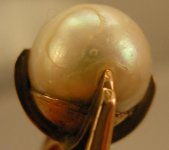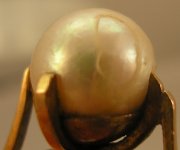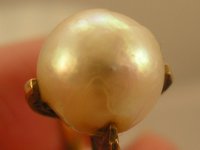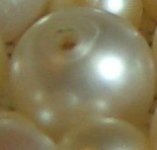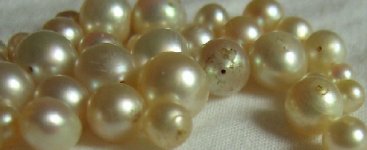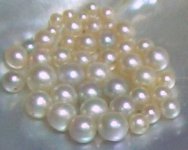Hi All,
Came across these photos of an Antique (natural ?) pearl and am naturally find it very interesting. I have wondered before what is the actual cause of missing nacre such as this pearl displays in abundance.
Could it be a parasite? Or could it be something else inside the oyster that stops the oyster from laying down an even layer of nacre? Or is the nacre laid down and then eaten away by a parasite?
Looks a little like it has been nibbled on by a mouse. If totally clean it would be a magnificent pearl IMHP .
If totally clean it would be a magnificent pearl IMHP .
Would love to know the thoughts of all.
I am having problems with one of the photos but will try again.
Dawn - Bodecia
eBay Seller ID dawncee333 - natural pearl collector and all round pearl lover.
Came across these photos of an Antique (natural ?) pearl and am naturally find it very interesting. I have wondered before what is the actual cause of missing nacre such as this pearl displays in abundance.
Could it be a parasite? Or could it be something else inside the oyster that stops the oyster from laying down an even layer of nacre? Or is the nacre laid down and then eaten away by a parasite?
Looks a little like it has been nibbled on by a mouse.
Would love to know the thoughts of all.
I am having problems with one of the photos but will try again.
Dawn - Bodecia
eBay Seller ID dawncee333 - natural pearl collector and all round pearl lover.

![482181015_o[1].jpg](/data/attachments/9/9234-8bdac2caa5b0cfcb9fd290900500d08f.jpg)
![482181057_o[1].jpg](/data/attachments/9/9235-7498f2c75871f4f94b850059d8ff50a7.jpg)
